The only way to describe CES is organized chaos. Over time, you get better at it. This year I optimized my schedule and shunned doing any scheduled appointments. This allowed me to to simply move from booth to booth in a manner that required the least amount of travel. Because in a show this large, travel is the enemy of time. As a result, I was able to cover an astonishing amount of companies and new products, and, got to talk to all of the usual ‘right’ people.
Because most of the announcements are smaller in nature (exempting the ones I’ve already posted about over the past few days), I’m going to go with short tidbits covering the key items and my thoughts on each. If you’ve got questions on items, feel free to drop them below and I can probably provide more clarity/detail.
With that, let’s dive into part one!
Action Cams: Geonaute 360º
Geonaute was at CES last year showing off earlier prototypes of their 360º action cam. This camera captures a 360º view that you can pan around in afterwards upon downloading the video footage.
The camera has a small mounting adapter system that allows them to ultimately utilize any GoPro mounts out there, thus, all of their (Geonaute’s) upcoming and existing mounts work with GoPro’s as well as the 360º action cam.
One cool item they were able to demo in the booth was combining the 360º footage with that from the Oculus unit. The Oculus is a virtual reality display goggle that as you turned left/right, it did the same in the 360º footage. Pretty cool stuff.
The unit is the second unit coming to market (in addition to the Garmin VIRB) that also captures ANT+ metrics, so you can capture things like heart rate data along with your video files.
While the unit is a fair bit overdue, Geonaute is currently looking to begin shipping in May, and has begun accepting orders in the past few days. With Geonaute being based nearby me in France, we’ve been working to coordinate getting a recent prototype camera to me for a few weeks of initial thoughts. That should happen shortly.
Action Cams: VOXX 360º Fly
Adding to the 360º action camera wave is the VOXX with their 360 Fly action cam. This cam records the same 360º view as the Geonaute camera above, though in a slightly smaller package. They unfortunately didn’t have quite as much information available when I stopped by, nor, many people that could talk in depth about it. The unit does include WiFi for transfers and control of the camera, and the entire camera is fully waterproof (you can see it mounted on the surfboard at back).
The downward view of the camera is actually better than it might appear. In the case of that surfboard, almost the entire surfboard is visible in the frame, despite the lens of the camera appearing to only be the very top of the unit.
The unit will be $399, and they plan to have it available in the June-July timeframe. It’ll be interesting to see how this and the Geonaute compare.
Further, I think both of these are really just the tip of the iceberg when it comes to 360º action cams. I’ve gotta believe by GoPro’s typical launch cycle of fall (2014), they’ll probably join the game.
The real challenge though today with all of these cameras is the lack of 360º upload support for YouTube and Vimeo, the major video uploading platforms. As a result, for you to view and interact with 360º action cam footage you have to go to the various sites of each camera (VOXX, Geonaute, etc…), which ultimately lowers social sharing and the like. Ideally, YouTube would get ahead of the game and establish some ground rules around file formats and standards. I’d suspect as a result, cameras would flock to those standards because it would significantly increase exposure potential for their cameras (and thus sales). Further, it would minimize the need for those individual companies to maintain infrastructure for video streaming on their own sites (expensive). Seems like a win-win for all.
Action Cams: Polaroid XS100i
Polaroid was showing off a number of cameras, including both their newest XS1000i, and their slightly older XS100i, seen above.
However, one of the the things that I found interesting is that it looked nearly identical to the ION Action Cams I’ve been testing recently. Thus, I was curious how they differed from the ION cams. As such, I asked a point blank question: “How does this differ from the ION action cameras that look near identical?”
Response: None
They literally couldn’t answer the question. They had no answer. They couldn’t tell me why theirs was better (or worse). They just simply gave a bland answer that other companies may have similar cameras on the market. And that was that.
If at an invite-only pre-CES media-only event where you are to have your top people present, you need to be able to answer how your camera is better or different from the competition. If you can’t, you should just pack up and go home.
In other news, they did have these cute little cameras there, the Socialmatic. These mini action cams are designed to be easily mounted or worn. Though, they weren’t functional – so it looks like things are a fair ways away there.
Action Cams: Contour (is back from the dead)
In the surprise stumble of the day, I found a Contour booth. For those not familiar, Counter went out of business back in August. One random day they literally shut down their website and told their 55 Seattle based employees they no longer had a job and to go home. That was that.
Since then, the remnants were bought up by a private equity firm, and they are now back in business. They’re now operating from Provo, Utah, and have begun semi-normal operations. There are now 18 employees and the website is back, along with support channels. Further, they were at CES in an attempt to mend fences with retailers and distributors and resume sales with those channels.
They didn’t have any new products to share, but did note they are working on new stuff. Hopefully that new stuff will be competitive with other units on the market, which I suspect (when combined with GoPro’s massive marketing machine), is what ultimately led to their downfall last time when they didn’t keep pace with competitors.
Action Cams: Sony AS100V & major updates to their software suite
Sony announced their new AS100V action cam at CES this week, which builds upon the previous AS30V they had out (and that I’ve been using lately). The AS100V continues the tradition of GPS + WiFi, but also adds in higher resolution with a new lens, and new higher frame rates. Timeframe for this is March at a cost of $299.
There were a few minor hardware things I noted as well on the unit (below, a prototype sample). First is that the back button area has been cleaned up to minimize accidental bumping on. While you could always lock it, it was sorta overkill for what you generally wanted to do in minimizing the bumps that leave it recording and burning battery. This insets the whole thing so it’s not so easily triggered.
Next, you’ll notice a small tripod adapter mount on the front of the camera. This way if you don’t need the shell of the case, you can go without it. The unit is now splashproof.
But, much of the changes that were most interesting to me were actually on the software side, which applies to the existing units as well. You’ll see below their new GPS Data Overlay feature, which allows you to create dashboards just like the Garmin VIRB Edit software does.
And, you can merge multiple videos together in dual-image shots. This is something I’ve been missing from the VIRB software, so I’m pretty excited to try it out on the Sony side.
Below, you can see an example with four concurrent cameras in a view, plus the map and dashboard. Really cool.
Lastly, their liveview wrist remote is now officially shipping. This had been outstanding since back in early fall, but units are now out in the wild. In playing with it a bit, I was impressed with it – the picture quality was solid, and the ‘delay’ was roughly .5s to 1s before it showed up. Quite nice.
Activity Trackers: Jaybird Reign
Jaybird introduced their first activity tracker – the Jaybird Reign. The wrist-based tracker has a few unique features that differentiate it from others out there, beyond just steps.
For example, Jaybird states that it can track non-walking activities such as cycling by allowing the smaller sensor piece to pop-out and be placed on a leg band. They envision being able to track numerous different activity types.
Second, it measures your heart rate variability (HRV) using ECG (it’s not optical). In fact, this is really the core of the product. They aim to be able to take this information and then provide you with predictive guidance for things like how much sleep you should get based on both past sleep patterns as well as activity during the day and fatigue from HRV.
Each night prior to heading to sleep it’ll give you a recommended sleep allocation:
Ultimately though, I feel the device is overpriced. Available in May, at $199US, it’s significantly more than any other tracker out there today except the Basis B1 watch. But that watch has so much more in it. For example, the Jaybird Reign won’t record – or even display – your heart rate (pulse), nor will it record any HRV information that you can access. Nor will it give you any activity files. It merely takes your HRV info and summarizes it.
Given the high price, and the awkwardly short feature set, I don’t see much success in their future.
Activity/Sport Tracker: Kreyos Meteor Smart Watch with ANT+/Bluetooth Smart
Kreyos was/is a crowd-funding project on Indigogo that is still working their way to delivery of units. They had a number of units out in the booth to poke at and play with. Units could be swapped between the clip-on band (seen below), a watch band (seen further below), and then a lanyard style band.
The unit is unique in that it contains both ANT+ and Bluetooth Smart, and has a bit more functionality than most other units on the market today (or coming to market). Below, you can see the wrist-band based version. Being one who ‘backed’ the project with my own money as well, I was somewhat surprised to see just how big the buttons are. They really stick out on the sides quite a bit. The cases sorta hide them a bit, but it’s still fairly hefty.
Here’s a bit better view of the buttons:
At present, the unit did not yet have ANT+ enabled in it, only Bluetooth Smart. In talking with them, they plan to begin shipping “by the last day of February”, and they noted that all “promised features” will be in the unit upon shipping.
Sport Headphones: Aftershokz with bone conduction
Aftershokz headphones are Bluetooth enabled headphones that don’t cover up your ears, thus allowing you to easily hear everything around you. The unit uses bone conduction, which is somewhat similar to the FINIS SwiMP3/Neptune underwater MP3 players.
They paired up my phone to one of the units, and then I tried them out for the rest of my time in the booth during our discussion. I was able to play music while still carrying on a normal conversation without issue. Definitely no blockage of outside sound.
The only complaint I’d have is that the music quality wasn’t quite as a strong as standard headphones would be, but given this is really targeted at the sport crowd that don’t want to block out outside sounds (for safety reasons), absolute music quality isn’t likely the biggest goal.
The Bluetooth version is $99 and gets about 6 hours of battery. They also have a wired version for $69 that includes a microphone. The units have physical power buttons, as well as dedicated volume up/down buttons.
ANT+ Integrated Waterproof Cell Phone: Sony Xperia Z1s (for US market)
Sony introduced the Sony Xperia Z1s, which is a slightly modified variant of the Z1, but for the US market. The two items of note here to sport folks would be the IP55 waterproofing, as well as the integrated ANT+ chipset. The waterproofing allows you to go down to 1.5M (just under 5ft) for up to 30 minutes. So plenty for rain or the occasional snorkeling excursion.
Meanwhile, the unit includes both ANT+ and Bluetooth 4.0 (for compatibility with Bluetooth Smart devices), so you can pretty much use any fitness tracking app on the market today without any extra adapter accessories.
Sport Device: Moxy Muscle Oxygen Sensor
Moxy was at the show demonstrating their MOXY Muscle Oxygen sensor, which measures muscle oxygen levels, often abbreviated in measurement terms as SmO2, which is the percentage of hemoglobin in the capillaries of the muscle that is carrying oxygen.
From that, you can monitor your workouts and start to determine optimal training zones. Much of the technology and guidance on how to use it is still very much in the early stages, though, Moxy has been at some coaching seminars recently working with a number of elite coaches using the system.
Over the past few months they’ve had a bunch of companies step forward and add support for the new ANT+ Muscle Oxygen device profile, which is aimed at recording that data in a standardized manner. For example, PeriPedal, IpBike and PerfPro, along with WIMU all support it. Further, it can also be switched into a mode that enables you to leverage any device that picks up ANT+ cadence sensors, so you can pair it with Garmin devices (though, Moxy is optimistic that Garmin will come around and add native support for the profile, potentially in their higher end units).
The solution is currently targeted at coaches and/or facilities that are able to afford the $850 price tag. I’ve got a system coming home with me to test out and give my thoughts on. Hopefully we’ll also continue to see wider adoption of the native sensor support and ANT+ device profile from additional devices in the industry.
Sport Device: Reebok Checklight
Reebok was on hand showing off their Checklight system, which aims to allow coaches to monitor players in the event of head impacts.
The system is essentially a very thin hat that’s worn (typically under a helmet) that has accelerometers and force sensors within it. It can measure the impact of force and then determine if that impact is severe enough to warrant the player being taken out of the game.
It has a simple three LED system, which will blink green when all is good, and then has a yellow and red level. The light panel sticks out below the helmet, as seen below – making it easy to see by others (coaches).
What’s interesting is that the red level lights cannot be turned off until the system is taken out and fully reset – protecting against a player just resetting their own indicators quickly to stay in the game.
Here’s a look at the guts inside of the hat, which shows the sensor strip.
Today, the system is only available in the US and Canada, and costs $150US. It’s also not wireless either, though they noted that’s something they’re planning for down the road (for example, to be able to monitor an entire football team from the sidelines remotely).
Sport Device: New Magellan Echo, and new Echo Golf App
Magellan announced three new color variations of their Magellan Echo Smartwatch. These three are shown in the front row, while the previous colors are shown along the back.
The above units aren’t quite 100% final (prototypes), and thus there might be very tiny variations in the exact final shades.
In addition, they also announced a golfing app companion for the watch. While I’m not a golfer (except mini-golf, I like that a lot), I was actually really impressed with the functionality of the app. Really cool stuff.
You can simply iterate through and see how far you are to the hole based on current position as well as from the tee. It’ll also keep track of score via the app as you go through each hole.
This is one of those perfect examples of 3rd party apps taking API’s like what’s available for Echo and running with it to put together sweet solutions. Apparently the whole integration piece was done in a few weeks, and if you already have an Echo unit, it’ll (the app) work just fine with it (works with any Echo).
After the break!
Hang tight, that’s not all!
As soon as my next flight lands back in Paris I’ll publish my next update, with news and photos of new products and updates from Garmin, ANT+, BKOOL, 4iiii’s, Withings, O-Synce, Outside Interactive, LG, Pebble, and Casio.
In the meantime, I leave you with this wall of remote controls I saw – apt to a commercial break.
I did find it entertaining that they put little ‘do not take photos’ signs up. Umm…yeah, you don’t exactly get that right on a convention floor as an exhibitor with an open booth on a main artery. Cute try though.
Thanks for reading!
Update! CES Part II is now available here!
FOUND THIS POST USEFUL? SUPPORT THE SITE!
Hopefully, you found this post useful. The website is really a labor of love, so please consider becoming a DC RAINMAKER Supporter. This gets you an ad-free experience, and access to our (mostly) bi-monthly behind-the-scenes video series of “Shed Talkin’”.
Support DCRainMaker - Shop on Amazon
Otherwise, perhaps consider using the below link if shopping on Amazon. As an Amazon Associate, I earn from qualifying purchases. It doesn’t cost you anything extra, but your purchases help support this website a lot. It could simply be buying toilet paper, or this pizza oven we use and love.




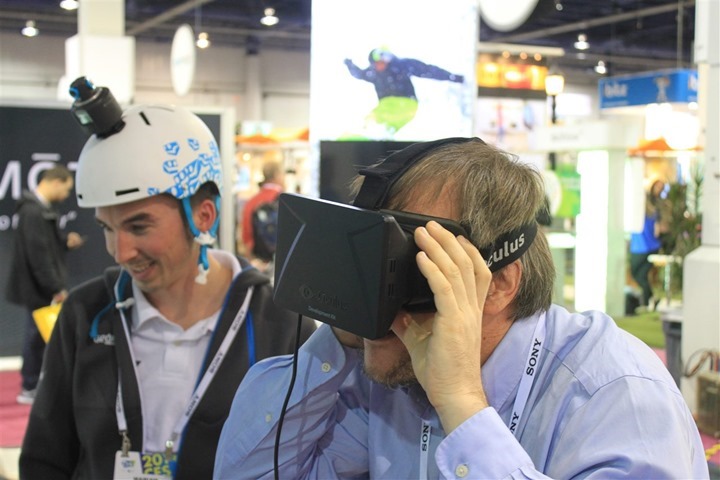
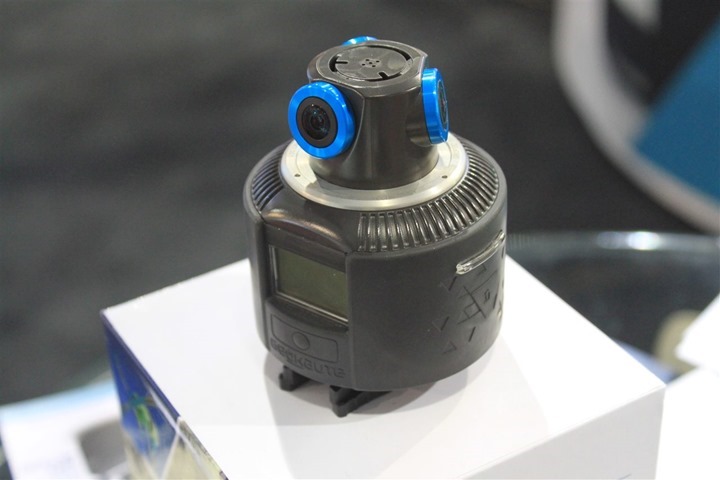
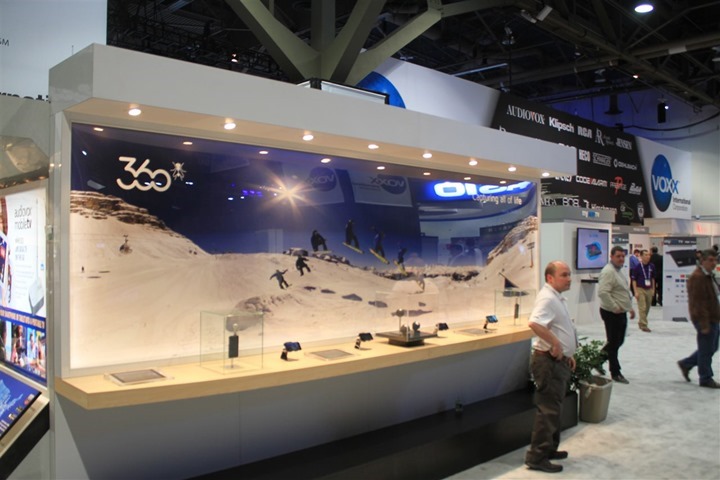
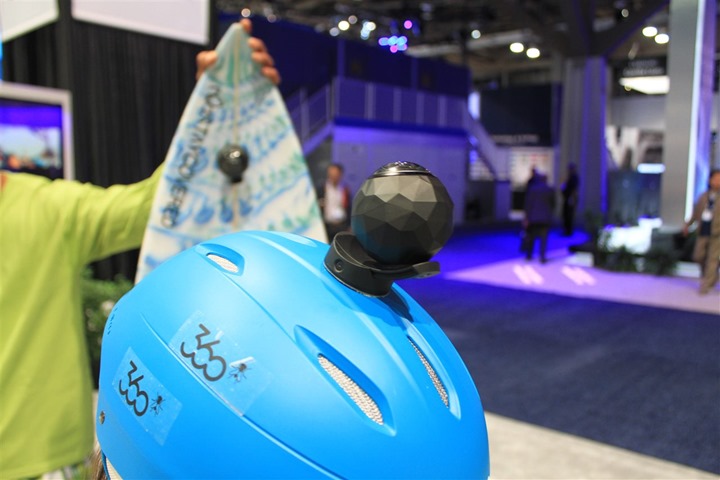
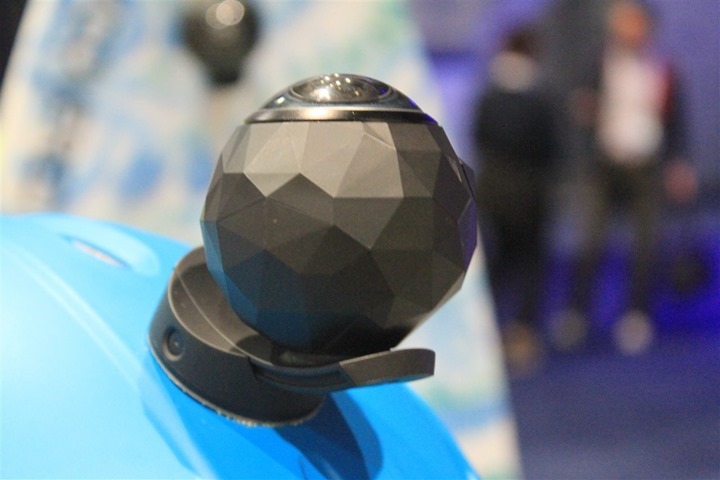

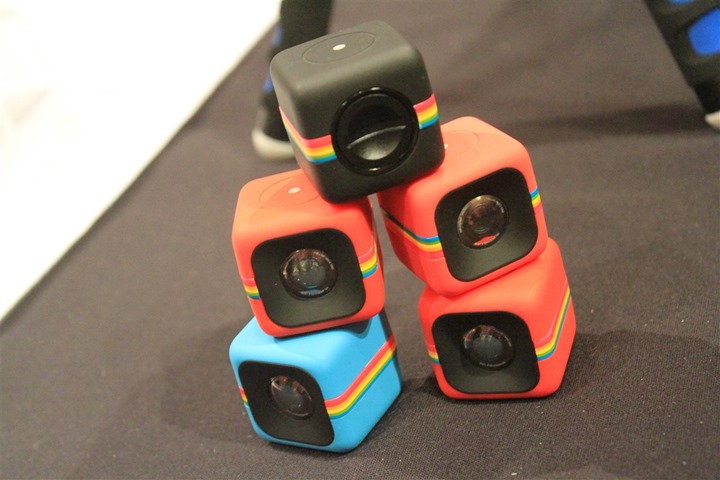

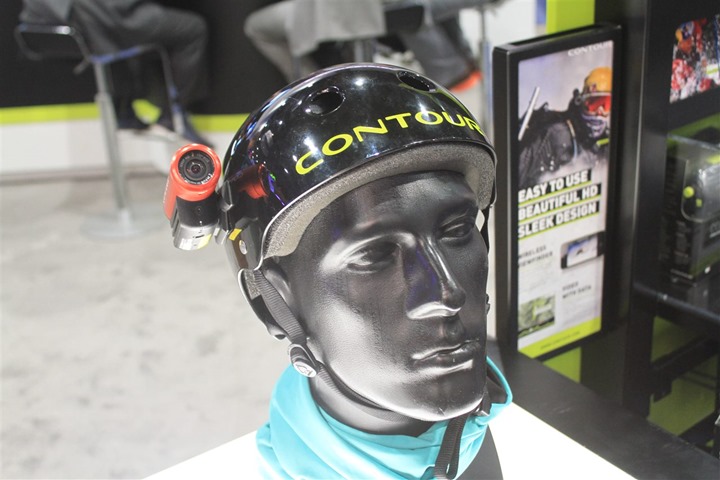
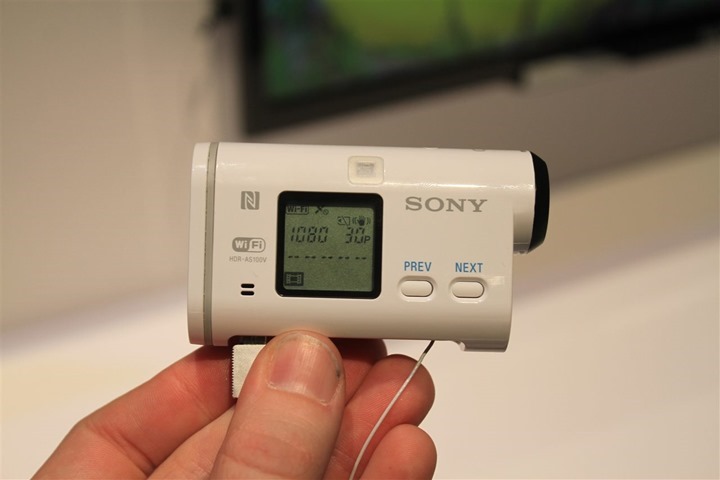
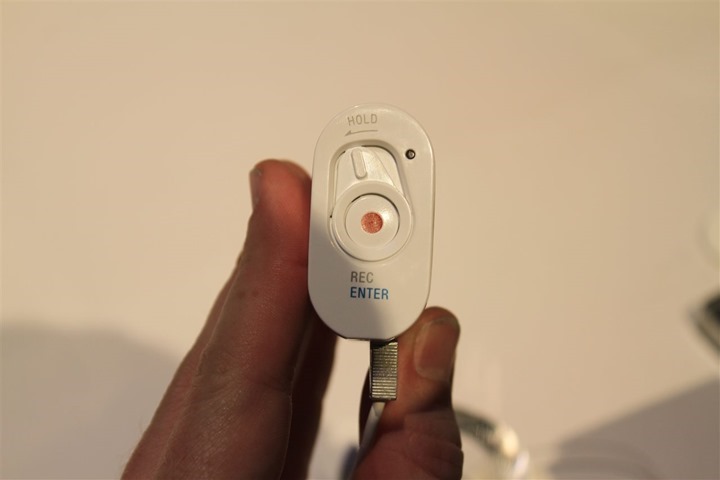
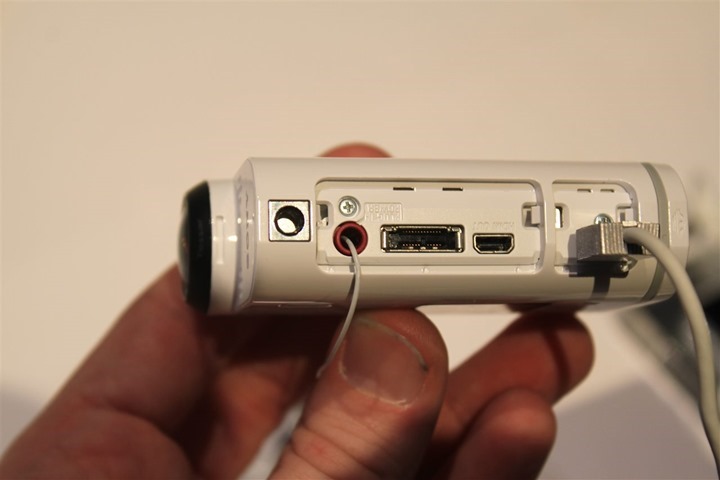
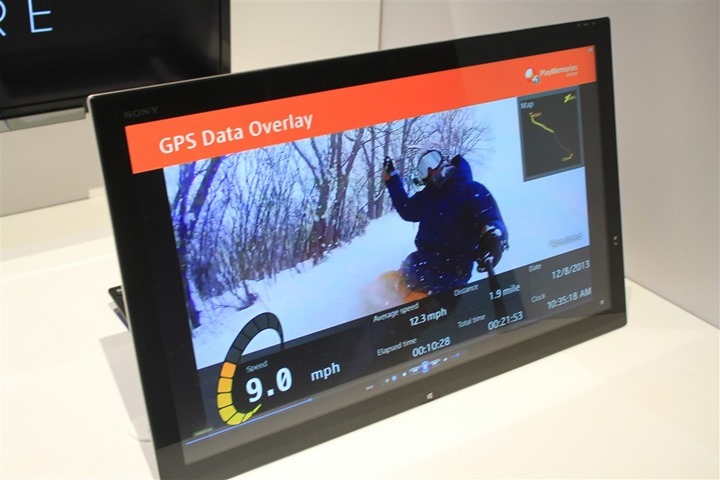
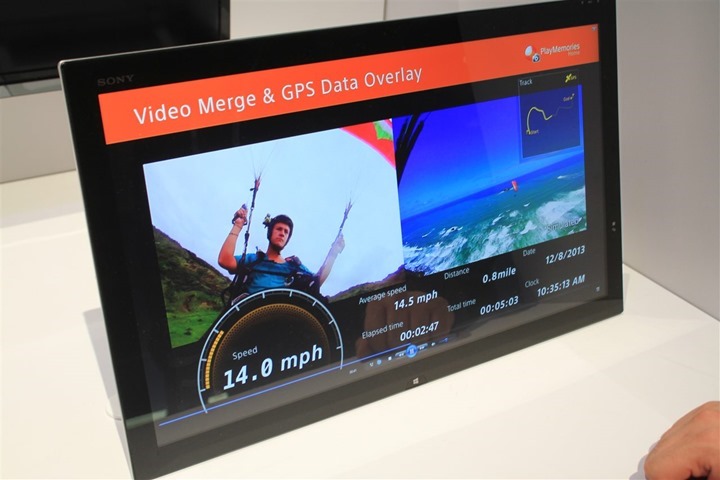
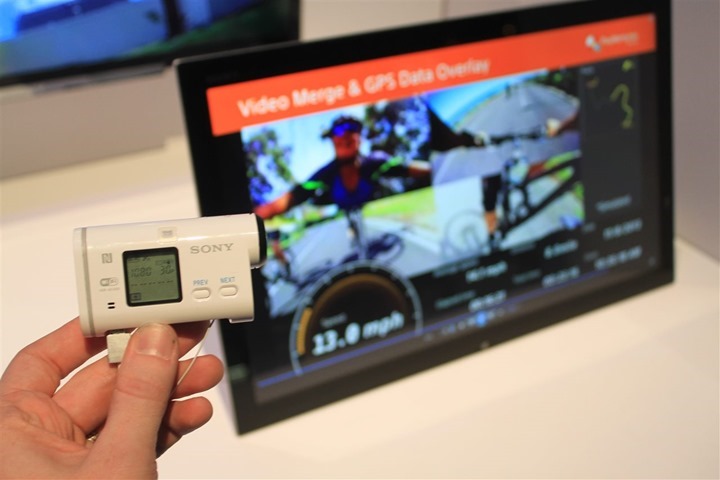
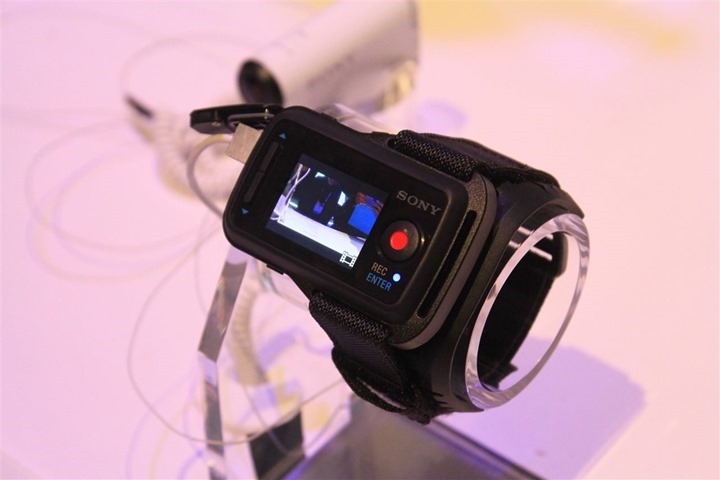
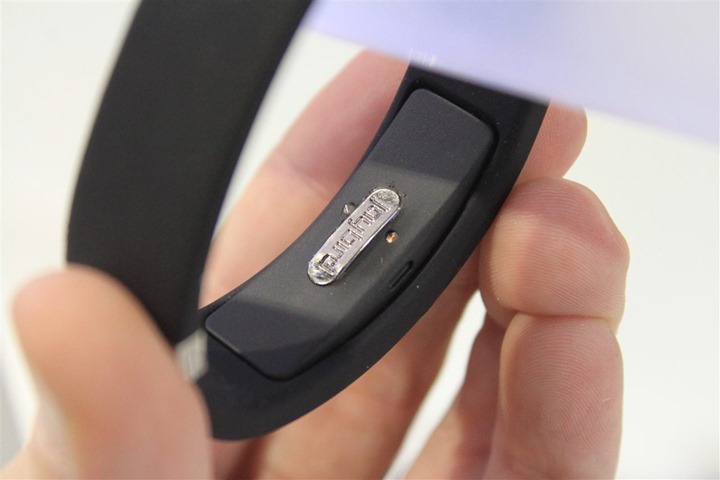
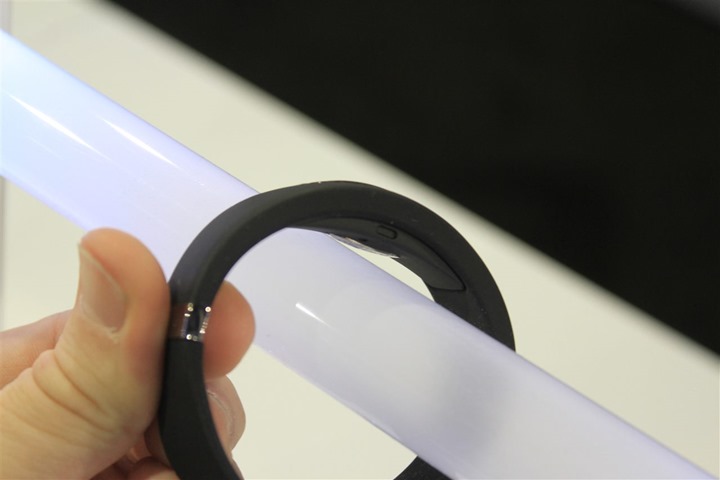
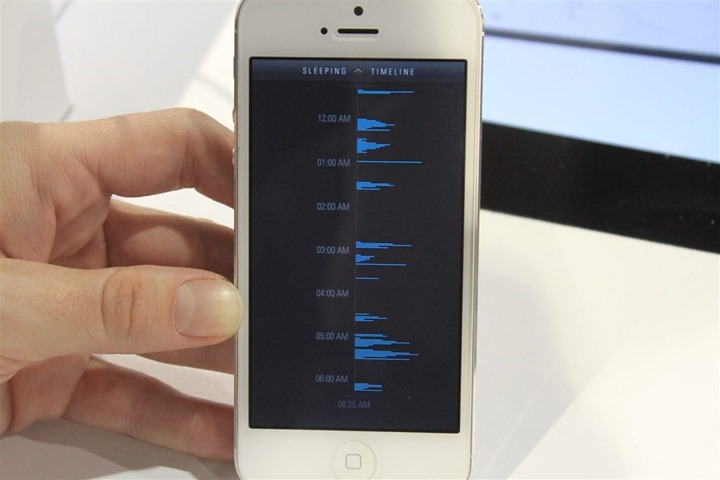
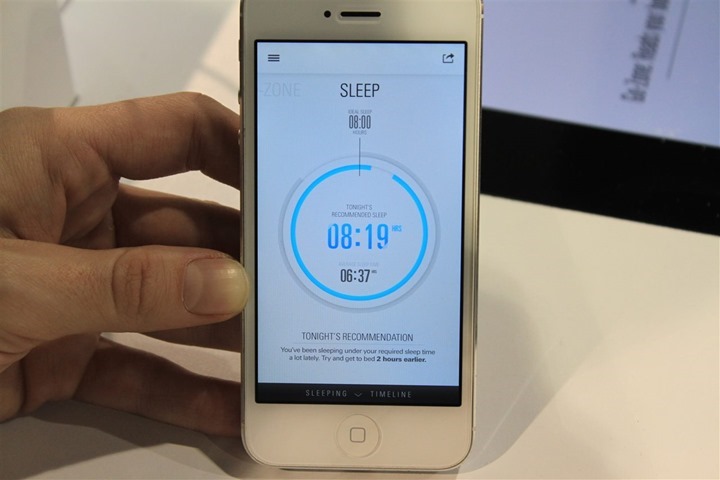
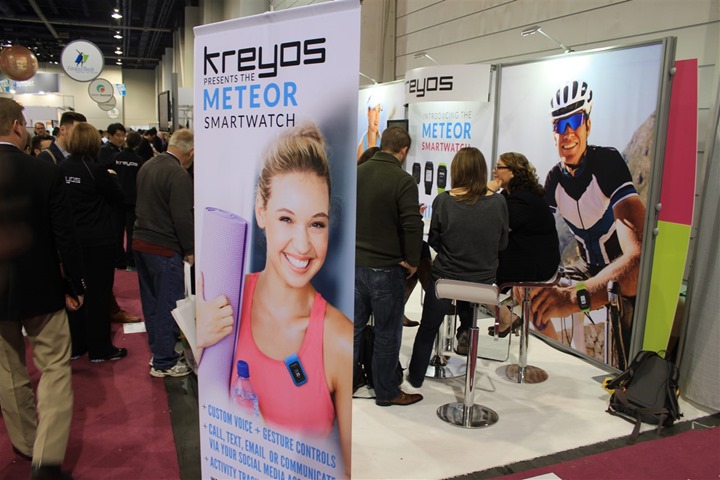
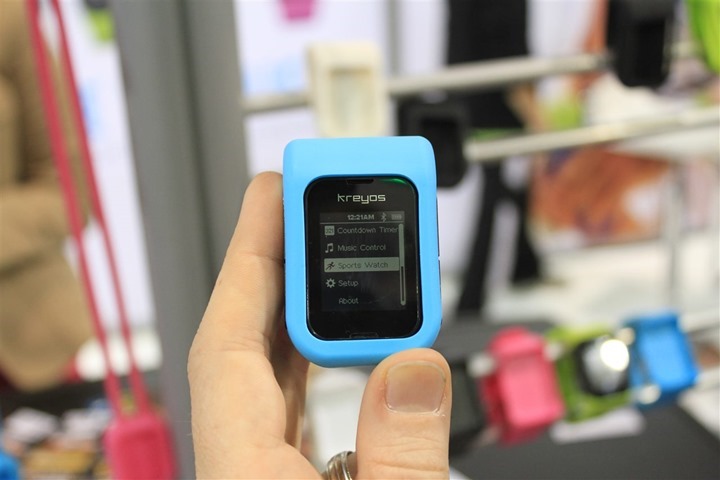

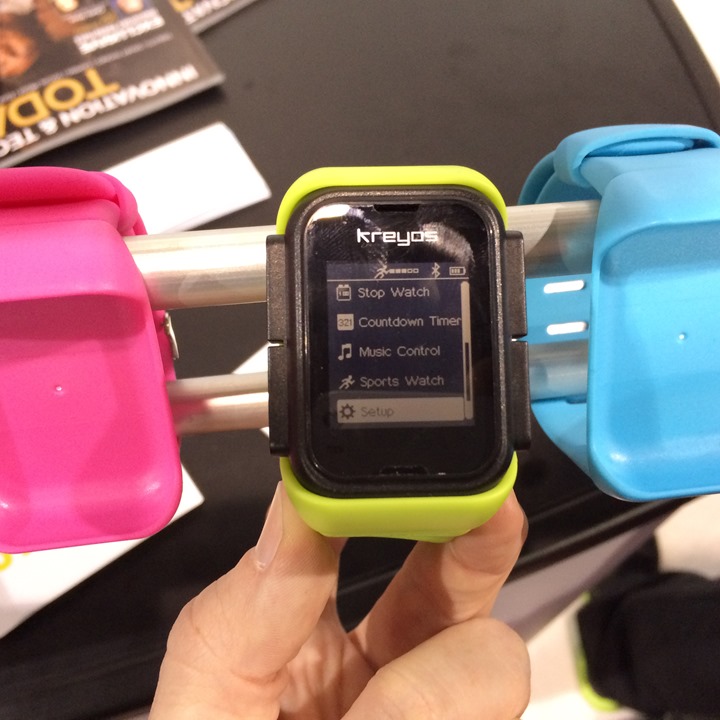
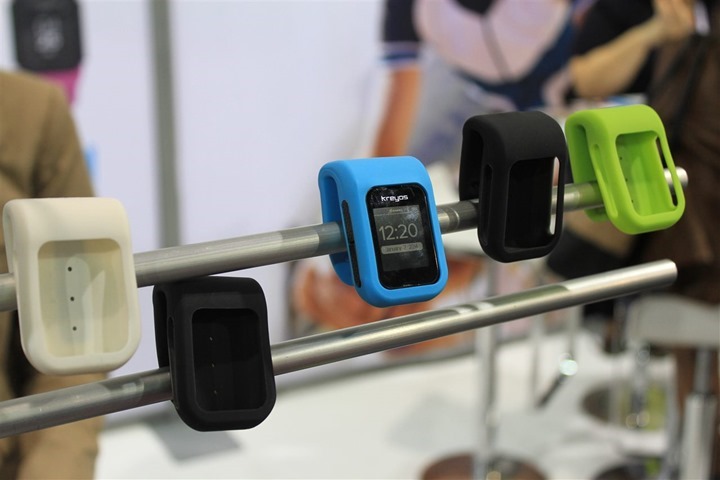
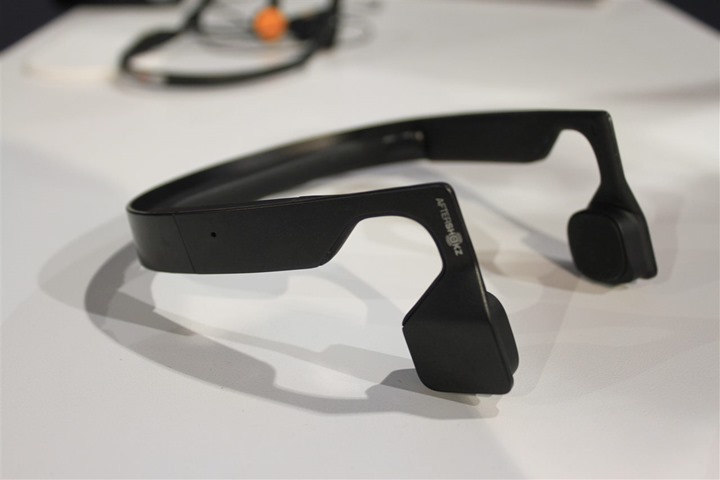
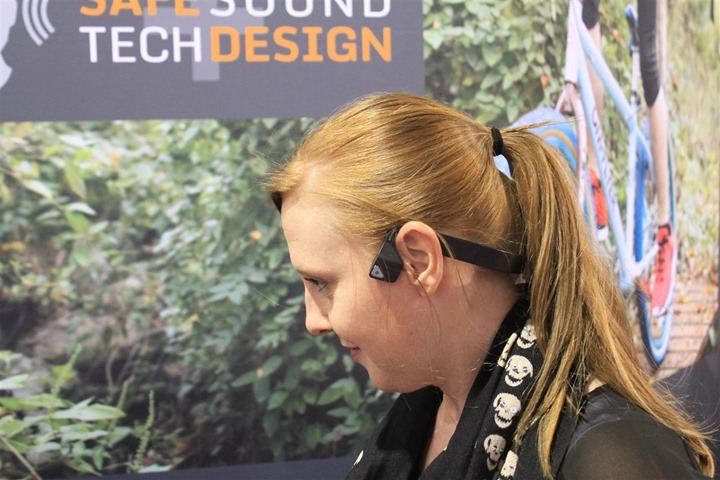
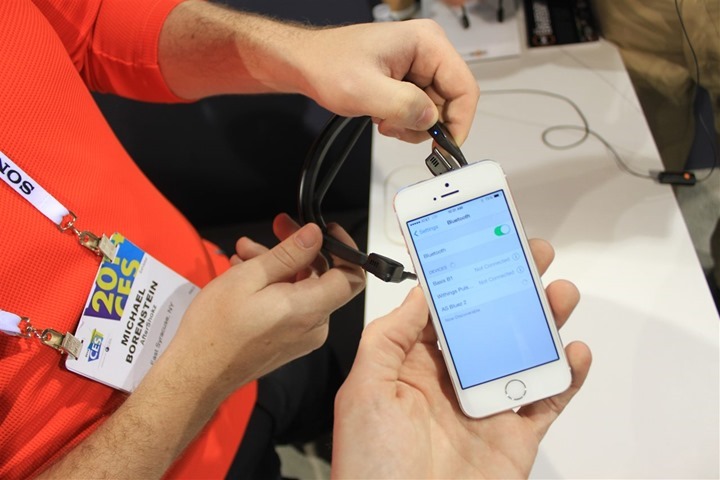
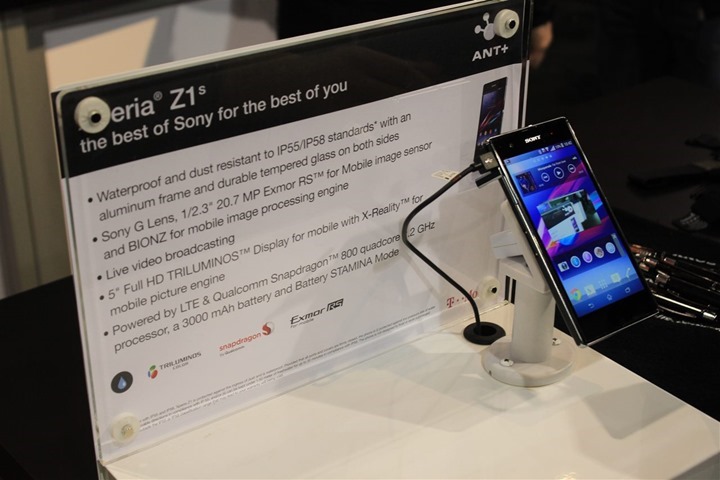
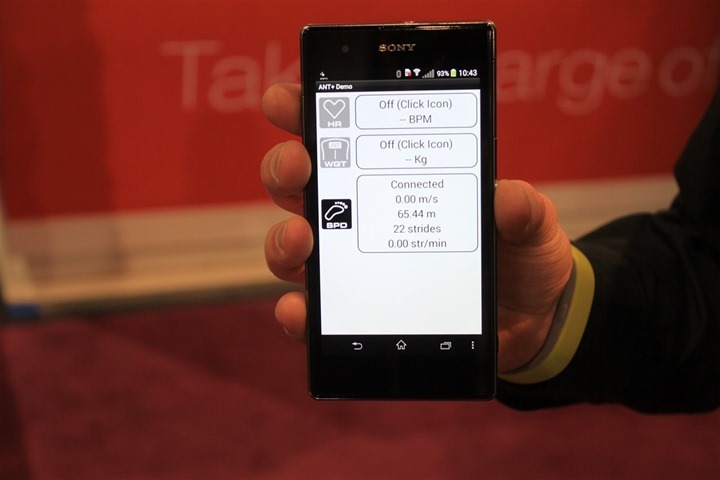
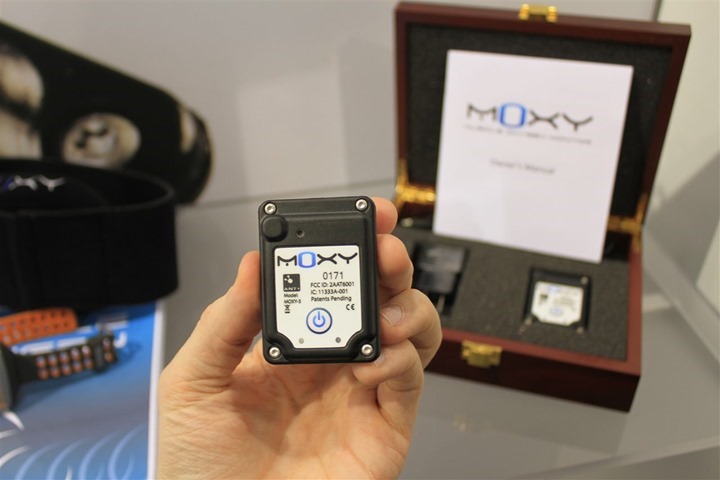
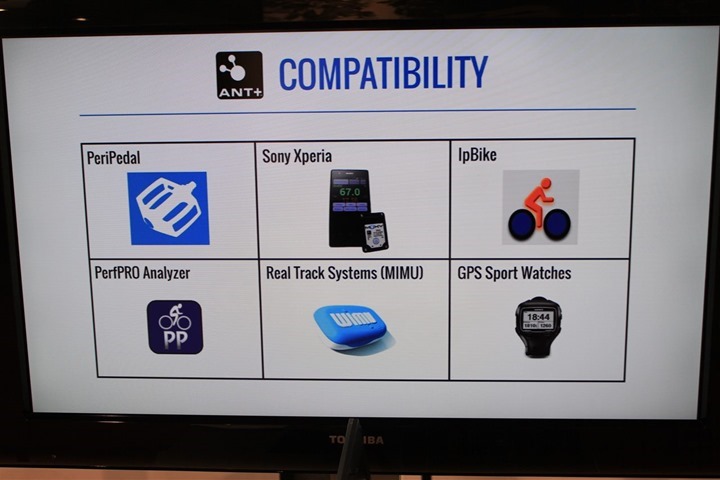
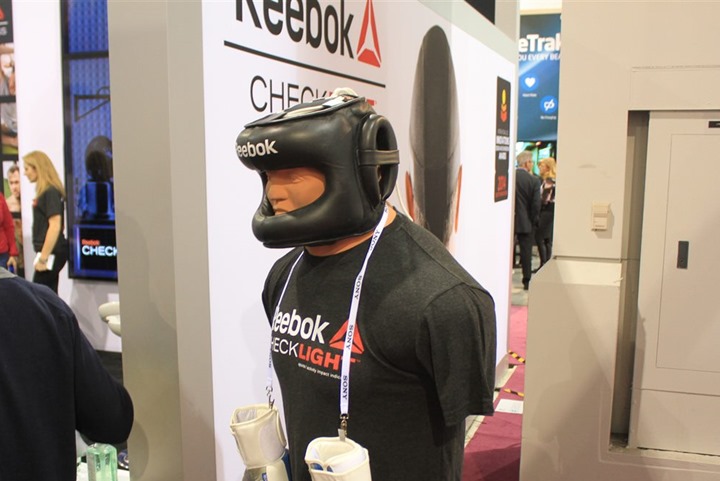
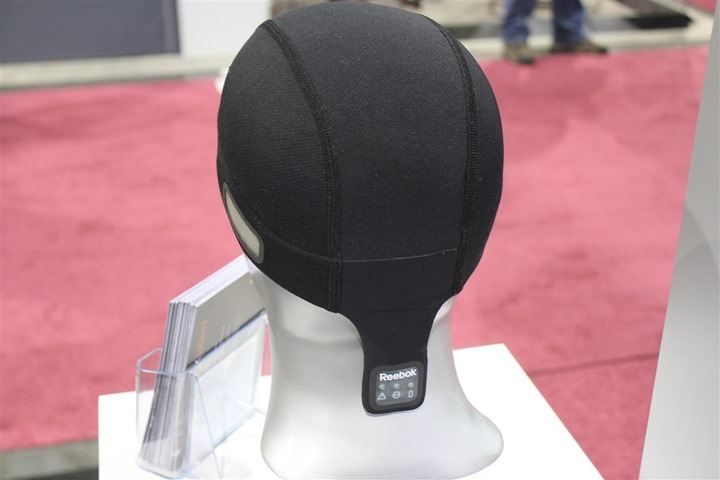
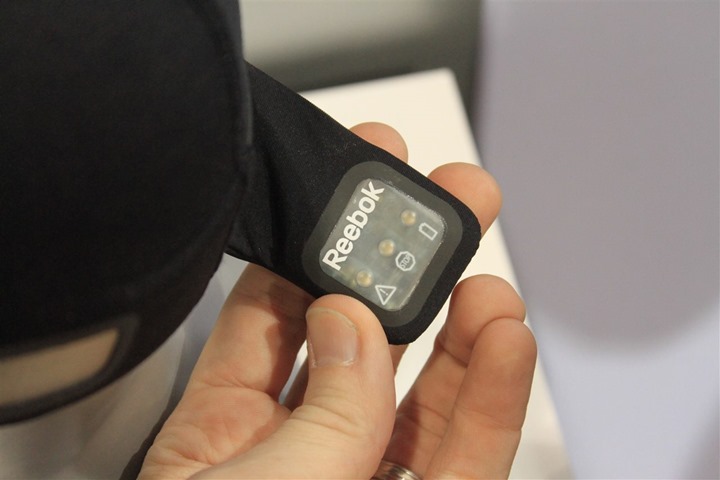
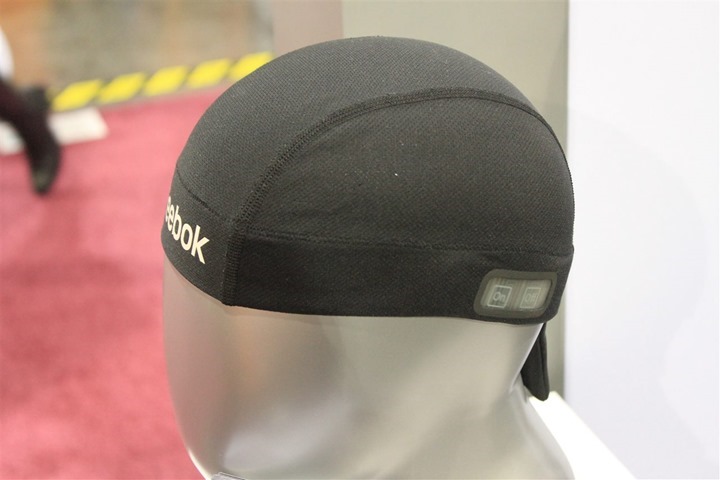
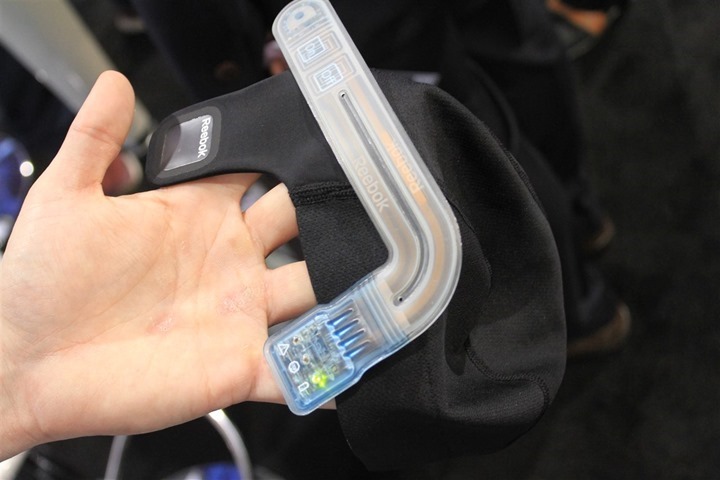
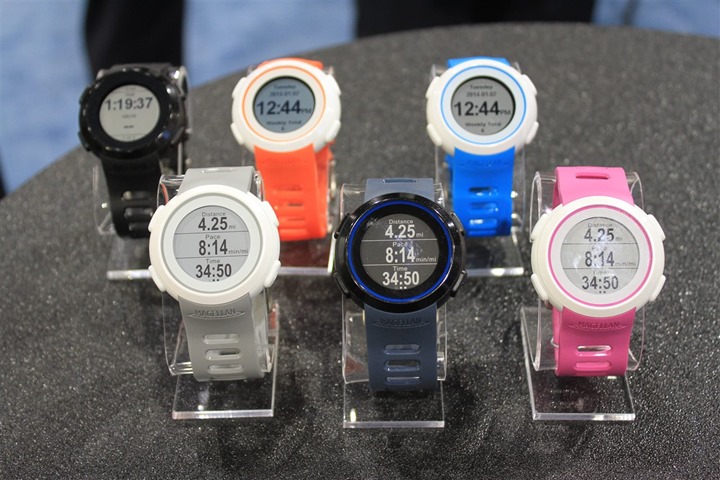
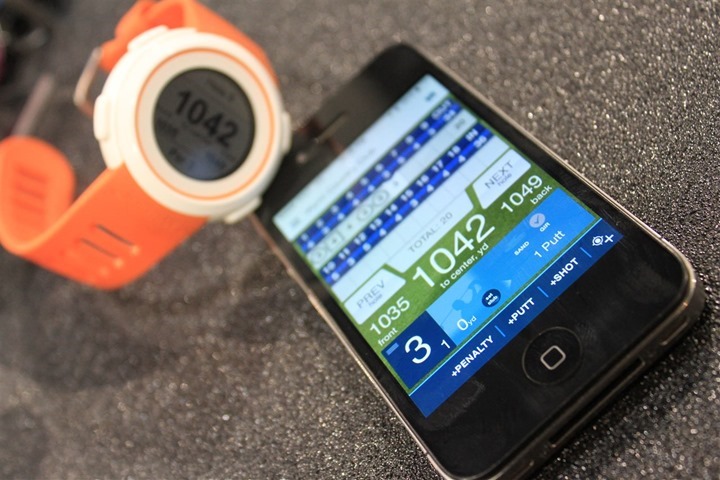
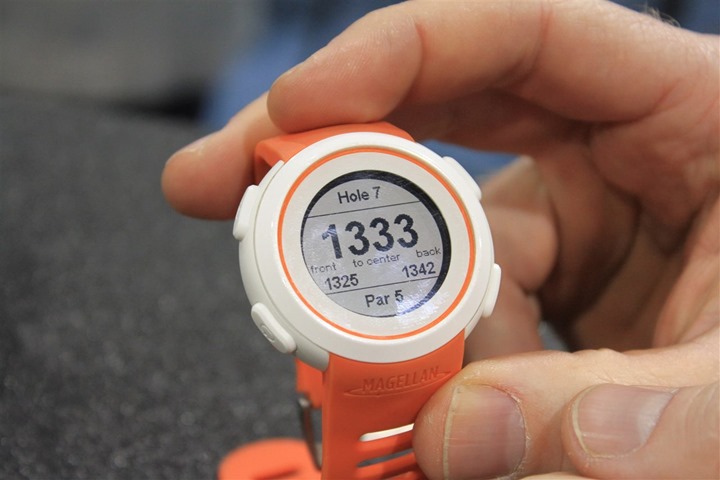
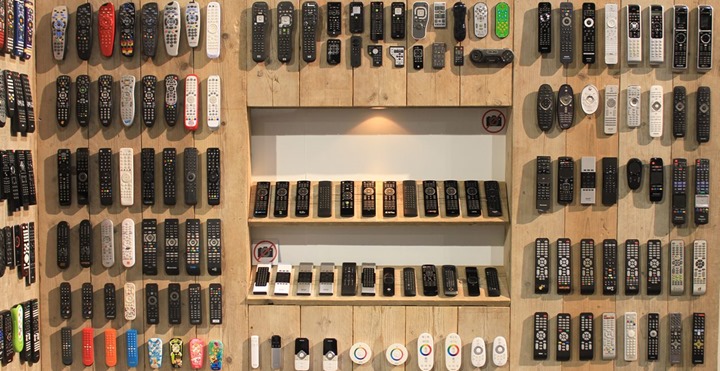





















Any chance you be covering these 2 products?
Wearit sports smartwatch (January release)
link to wearit.net
&
Scosche arm band heart rate monitor (July release)
link to engadget.com
I’ll be looking at both, but unfortunately neither made the roundup. I missed Scosche (tiny little booth I found out later). But, I’ve talked with them in the past so I can get an update on the side.
The Polaroid / Ion thing isn’t surprising. Since their bankruptcy in 2001, they’ve basically stopped manufacturing actual products.
The post-bankruptcy owner “said he’d largely concentrate on affixing the Polaroid name to consumer-electronics products manufactured by other companies.
This licensing approach has continued under Polaroid’s current owners…”
link to twincities.com
Correct, I knew it was all OEM’d ahead of time, but was interested if they did any value-add on it.
There is (at least) a third clone actually, the Monorpice MHD ;-)
Cool roundup!
Do you know of any sport devices that show you your real time hrv now?
The only thing I know is the sweet beat iPhone app paired with a Bluetooth chest strap.
Do the optical heart rate sensors get good enough data to calculate HRV?
I’m interested in HRV as a proxy for stress but also as an indicator of over training
+1
RAY,
Do you see the future of fitness devices like the Garmin Edge 810 moving in the direction of the Data Recorder just announced for the GM Chevrolet Corvette with integrated Video, GPS and data recorder. link to youtube.com
Yes and no. I think you’ll continue to see convergence where it makes sense. For example, we see that on the VIRB today. Realistically, you could record a ride on the VIRB – not have an Edge 810 – and get virtually all of your data uploaded to Strava or wherever from just the VIRB (especially with power meter support for VIRB coming soon).
I do think longer term you’ll see cameras integrated straight into Edge units, but I don’t think that’s a ‘this year’ type of thing.
Ray! Did you finally ditch your iPhone 4s? Is that your new 5s in the Aftershokz photo?
On a related note, I like the Sony Z1s, but having owned the Z I found it too big (and lacked ANT+), the Sony Z compact retains the great features of the Z1 but in a better form factor. Any word if Sony might bring the compact to the US market?
Yup, finally went for the upgrade. :)
No word on if they’ll bring it to the US market, but I’ll see if I can do some poking.
Did you get a chance to play around with the new Sony activity tracker: The Core?
No, unfortunately not. I had it on my list, but got sidetracked looking at the action cams and ran out of time.
Kreyos question. How to you export activity files from the kreyos? .fit? .gpx????
New Sony action cam is intriguing.
Indeed. It’s also worth noting that I asked about some of the underwater focusing issues that the current AS30V has (basically, it doesn’t focus underwater) and was told that there’s a bit of a firmware update coming for both the current and new camera that they believe should improve the situation.
Yep, not that much of an update in terms of new “consumer” features though (the whole timecode/multicam thing for instance). Not a big fan of the new color and about “you’ll notice a small tripod adapter mount on the front of the camera”, you’ll actually need a (provided) adapter to use a standard tripod mount as seen here : link to sony.net
Hi Ray,
Thanks for the extensive CES coverage.
Do you know if the Sony Xperia Z1s contains a barometer?
Because the Xperia Z1 didn’t.
I had two Aftershokz Bluez units die on me before I finally decided to bail out and stop wasting my time and effort with the product. They really weren’t manufactured to survive basic sweat exposure during workouts. :(
The ones you took pictures of looked somewhat different from the ones I had though. Second generation units?
link to pleasefeedthegeek.wordpress.com
Hey Ray,
Is Geonaute part of the Decathlon group? I see a lot of stuff branded Geonaute in my local Decathlon
Yup, they are. And yup, lots of stuff in Decathalon from them as a result. :)
So is the moxy basically a pulse ox sensor? Or is it more of almost VO2 type info? I just got the pulse for Withings. Been playing with that for little over a week now. Did you do a comparison with the Zeo and the pulse? Also, how does the aura compare to the pulse? Thanks
No, it’s measuring muscle oxygen level. They have a pretty interesting infograph on it all here: link to my.moxymonitor.com
Aftershokz are great, and their costumer service is exceptional. I prefer the regular (AS321) M2sport model, as I need the microphone, and the battery life is longer; My solution was to attach a small Bluetooth adapter (In my case, Jabeer Is901. 5-6 hours per charge), and then I can both hear music and speak in (sort of) wireless mode.
Aftershokz headphones have been out for awhile (although I had some problems finding the bluetooth version). I don’t suppose they had anything new to offer?
BTW, I have the wired version, and I love it.
These were the v2 version, which is new, and apparently has better sound quality.
Anything else you saw on the btle stride sensor front other than the new Wahoo Straps? I have the wahoo bt heart rate monitor and the bt cadence/speed sensor. Not using any Ant+ At all and have everything syncing to iphone. Looking for something that would track running distance on treadmill to iphone. The only thing I’ve seen is the polar that you’ve reviewed and I didn’t like how it connects to the shoe(I rotate shoes daily), plus it looked kind of big. Any suggestion is appreciated.
See the Part 2 post for a bit more from 4iiii’s.
Also, check out the Adidas Bluetooth Smart pod (I talk about it some in my Adidas GPS Smartwatch review). It works with the Wahoo app fairly well, been using it the last few runs with that and the Polar app, and is nice and tiny. I’d recommend it.
I finally found a pic of the tripod adapter. It’s missing the little notch that the housing has which prevents it from rotating. Which means the K-Edge mount won’t interface with the notch either. I was excited at first because you don’t need a waterproof housing on the bike, but alas. Fail.
Link by chance?
link to sony.net
Hmm, but looking at that, the cutout is there. It’s at the left-edge of the bottom bracket piece.
Ah, I see it now. That would make for a great bike setup then, with the K-Edge bracket. Looking forward to your review! :)
Interesting article on Shokz concerning their patents and lawsuits. Shokz has certainly grown larger since this old article but are getting serious competition from other companies in bone conduction.
link to lexology.com